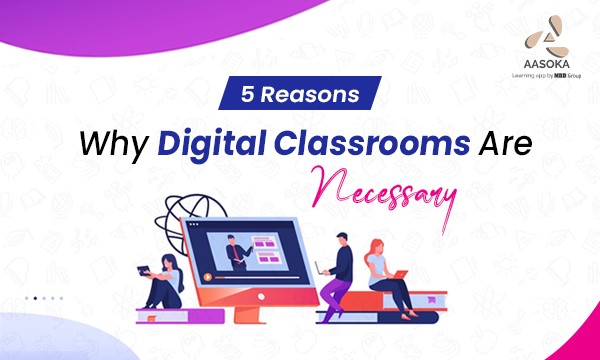
5 Reasons Why Digital Classrooms are Necessary
Digital classrooms have become increasingly popular in recent years due to the numerous benefits they offer to both students and teachers. Here are five reasons why institutions should consider having a digital classroom:
- Enhanced flexibility and accessibility: Digital classrooms offer enhanced flexibility and accessibility, allowing students to access course materials and participate in classes from anywhere, at any time. This flexibility is particularly important for students who have other responsibilities, such as work or family obligations, and cannot attend traditional classes. Additionally, digital classrooms can be accessed from a variety of devices, including laptops, tablets, and smartphones, providing students and teachers with the convenience of being able to learn and teach on the go.
- Improved engagement and collaboration: Digital classrooms can provide a more engaging learning experience for students by using multimedia resources, such as videos, interactive quizzes, and games, to reinforce learning concepts. Digital classrooms also offer interactive features such as virtual whiteboards, chat functions, and video conferencing, which can promote collaboration and discussion among students. This can lead to a more dynamic and interactive learning environment that is engaging for students and helps to promote the development of critical thinking skills.
- Personalized learning: Digital classrooms can be customized to meet the needs of individual students. Teachers can tailor course materials to fit the learning styles and preferences of each student, offering a more personalized learning experience. This approach can help students to better understand and retain information, leading to improved academic outcomes.
- Improved accessibility for students with disabilities: Digital classrooms can also improve accessibility for students with disabilities. Online resources and tools can be designed to be more accessible for students with visual or auditory impairments, as well as for those with mobility limitations. This can help ensure that all students have equal access to learning materials and opportunities.
- Cost-effective: Finally, digital classrooms can be more cost-effective than traditional classrooms. With digital classrooms, institutions can save on expenses such as classroom maintenance, utilities, and transportation. Additionally, digital classrooms can be used to deliver courses to students in different geographic locations, allowing institutions to reach a larger audience without incurring additional costs.
Conclusion
The utilization of digital classrooms presents numerous advantages, such as increased flexibility and accessibility, enhanced engagement and collaboration, customized learning, improved accessibility for students with disabilities, and cost efficiency. Through the application of digital technology, educational institutions can establish more efficient and captivating learning environments for their students, resulting in better academic results.
